Park It!
Your garden center’s parking lot is the first thing your prospective customers see when they drive up, so why should it be an afterthought for you?
Famous last words from garden center owners:
“We filled the parking lot!”
“We only use all of the parking lot on maybe a couple of days a year.”
“We’re not a big box, and we don’t want a big box environment.”
“It isn’t that bad. Customers keep coming.”
The typical garden center owner overestimates the willingness of consumers to tolerate poor, inadequate parking conditions. If you think you are getting by with a usual unpaved, uneven, unmarked parking area, think again. The cost of poor parking adds up fast. But more importantly, better parking may be the least resistant path to increased profits.
Business problems such as declining profits are often blamed first on declining sales or competition. Those factors may be present, but the quickest solutions often involve getting back to the basic principles that might have allowed the business to be more profitable and more competitive in the first place. Let’s look at a basic principle such as providing a reasonable place for your customers to park their car. Did you know negative word of mouth about your business in other areas may be caused by what happens or doesn’t happen in your parking lot?
Famous last words of former and prospective garden center customers (in approximate order):
“Looks like they’re too busy today. I’ll come back later.”
“Will I find a parking space?”
“Will there be anybody available to answer my question?”
“Will what I want be picked over or sold out?”
“How long is the checkout line?”
“How long will this take?”
And upon leaving (if they came into your store anyway):
“What was I thinking?”
Every customer you don’t attract to your store because of perceived limitation based solely on impressions from your parking situation will cost you money.
Making an Impression
Parking is one of the first and also one of the last impressions your business makes on a customer; it deserves to be more than an afterthought. View parking as a component of, not separate from, the larger outdoor store, in the context of visual appeal and function. Your customers’ impression of and experience in your parking lot can build, destroy or neutralize their value perception. Exactly what impression and experience do you want your customer to have? You have more control here than on most other areas of your store because a parking lot is static in terms of how it looks and works once you have created it. Why not build value where you have control and get a lasting payback on your effort?
Redevelopment Relief
We recently worked with a client to redesign their parking area. The store’s driveway previously went through the middle of the property, with the entrance on one street and the exit on the next. Parking spaces were located along both sides of the driveway. The new driveway curves to the side of the property at the entrance and again at the exit. The parking spaces are along the driveway, with all of the shopping area to one side.
Now, customers make comments to the effect of, “I don’t have to fear getting run over to
shop here.”
It is not only possible to provide safe parking and shopping environments; it is necessary. There are logical and practical concerns in three levels of the parking solution:
Regulatory. These requirements deal with the number of parking spaces, handicap spaces, space size, driving-lane width, and entrance and egress lanes. Regulations may override your basic need to provide parking space for your customers, but they deal primarily with practical issues, and it is wise to apply them even if you are not required to do so in your locale.
Technical. Technical aspects of parking that are not always regulated include the seasonal utilization, terrain and grade, as well as overflow capacity, which can well exceed any regulatory requirements. They usually are based on the square footage of your indoor shopping area and must also accommodate special events and peak weekend days. Varied seasonal use is more extreme in our industry than most other retailers’, and it means something different depending on where your garden center is located, as well as your style of promotional efforts.
Design. Associating a paved parking lot to the shopping experience of a big-box retailer is a mistake and a poor excuse for slacking on your responsibility to provide your customers a safe and convenient parking experience. The fact is that parking is a business requirement and an opportunity to add value for your customer and profit to your bottom line.
Design Challenges
Generally, asphalt or concrete paving is the best route for everyday parking demand year-round and cost-effectively over the life of the project. You can add amenities such as landscaping to avoid the big-box feel. In some cases, you can make arrangements with adjoining properties for overflow parking, if it doesn’t hamper safety and convenience. (This is ideal if your neighbor is a church, professional office or some other retailer with different parking demands than you.) Seasonal overflow and promotional parking can often be paved with compacted fine gravel or exist in a properly marked grassy area.
You may notice when you shop in other retail locations that those sites are almost always relatively flat with few grade changes that require even one step up or down or endanger customers with ramps that can cause runaway carts. However, in the garden center industry, many purchase “cheap” land that becomes more expensive with use. In the end, it is much better to pay more for more suitable land than to live with and maintain sites with invisible costs that deter to customers or require additional labor and maintenance.
Questions to Ask
Ask your staff and customers the following important parking questions:
Approach. Is the street entrance visible from far enough away to allow safe slowing and turning into the driveway? Is the apron wide enough and paved with asphalt or concrete to allow safe turning at higher speeds? Have you tested this yourself from both directions?
Directional signage. Is it clear where customers should park? Is handicap parking easily located? Is a store hour sign visible from the road so customers know when to come back if you are not open or appear to be too busy?
Driveway. When a car backs out of a parking space, is there room for several other vehicles to “stack” in the driveway so customers can still pull in off the road?
Paving. Is the paving seal coating on asphalt, parking stripes, potholes and cracks well maintained? If your lot is paved with gravel, can you feel individual stones through the soles of your shoes? Does water collect in deep puddles during downpours?
Parking spaces. Are spaces wide and deep enough to accommodate SUVs, pickup trucks and vans, which customers often drive to garden centers so they can carry large purchases home?
Store entrance. Where should customers go after getting out of their car? Is the store entrance clearly identified as a single location?
Amenities. Are garbage cans available? Are there areas to walk a dog? Is there a place for non-shopping companions to relax while they wait? Are islands, berms and landscaped areas attractively landscaped and superbly maintained?
Security. Can the parking lot be secured from after-hours traffic? Can the shopping area be secured from the parking lot so customers can enter adjacent to the checkout area?
Cart parking. Is space provided and clearly marked for return of shopping carts?
Pickup area. Is there a designated, secure area where customers can drive to be loaded with
large orders?
Receiving traffic. Is receiving traffic separated from customer traffic?
Exit. Is the driveway wide enough for an entrance lane as well as separate right- and left-turn exit lanes?
Make a Lasting Impression
Ensure that your parking islands and surrounding landscape inspire confidence. Your beds should be well maintained, free of weeds and debris, and full of color and inspiration.
If you can’t answer the questions in the previous section with a loud “YES!” your parking area may be keeping customers from your store. Can you afford to live without
their business?
Do the math
If you take the average revenue per parking space on your peak sales day of the previous year and divide that by a conservative 50 percent for the cost of goods sold, the result is money you could have earned for each additional parking space you could have filled. Based on our studies, an average amount of revenue per space is a little over $700. After deducting the cost of goods sold, assuming no incremental operating or wage expenses, the investment in each additional parking space would earn $350 of profit for each day of use. If your gross margin is higher, your earnings would be greater. Think about it: In one spring season, you could recoup the cost of increasing the number of parking spaces and make a profit.

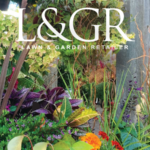
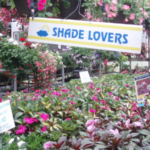

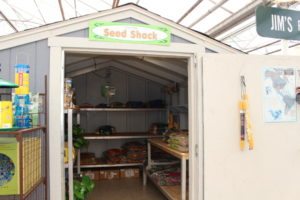

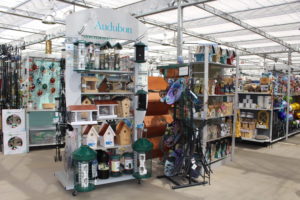
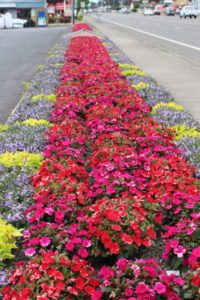
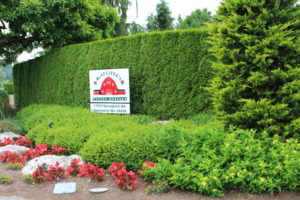
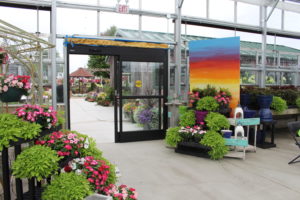
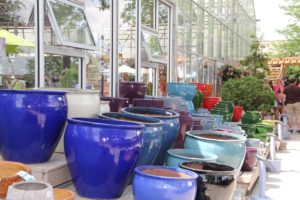



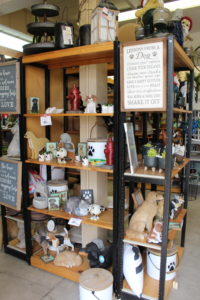

 Videos
Videos





